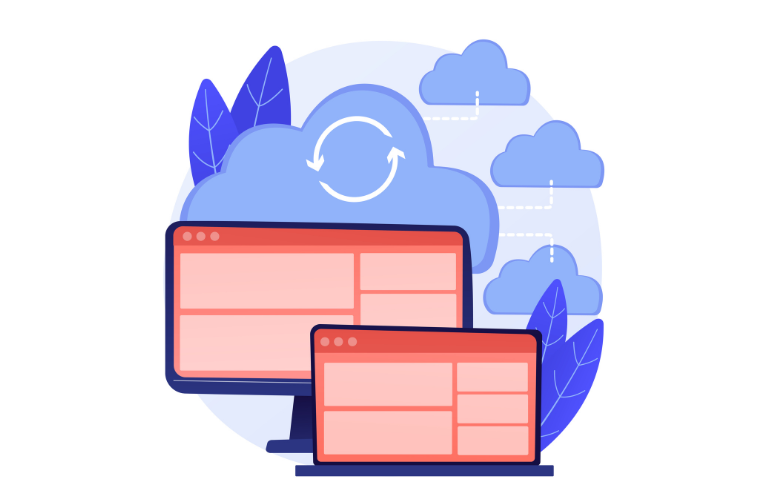Creating an AI Chatbot with Laravel and Free LLM APIs is a game-changer for developers aiming to deliver intelligent, real-time user experiences. By combining Laravel’s robust PHP framework with free large language model (LLM) APIs like Groq or Cohere, you can build a scalable chatbot without breaking the bank. This guide walks you through the process, addressing pain points like slow performance and complex integrations, while offering actionable steps, shortcuts, and practical examples for developers at any level. Let’s dive into crafting a chatbot that’s fast, secure, and engaging.
Table of Contents
Why Choose Laravel for AI Chatbot Development?
Laravel’s flexibility, extensive ecosystem, and RESTful API capabilities make it ideal for integrating AI functionalities. Pairing it with free LLM APIs reduces costs while leveraging cutting-edge AI. Here’s why this combo shines:
- Scalability: Laravel handles growing user bases with ease, integrating with cloud platforms like AWS for heavy AI workloads.
- Security: Built-in protections against XSS and SQL injection ensure your chatbot stays safe.
- Ecosystem: Laravel’s packages, like Guzzle for HTTP requests, simplify API integrations.
- MVC Architecture: Separates logic, making AI model interactions clean and manageable.
For businesses, an AI Chatbot with Laravel and Free LLM APIs delivers smart customer support, personalized experiences, and automated workflows, saving time and resources.
Real-World Use Cases
An AI Chatbot with Laravel and Free LLM APIs can transform industries. Here are practical applications:
- Customer Support: Automate responses for FAQs, reducing support team workload.
- E-commerce: Offer personalized product recommendations based on user queries.
- Content Creation: Generate blog drafts or social media posts in seconds.
- Data Analysis: Summarize large datasets or predict trends using AI insights.
For example, a Shanghai-based e-commerce firm used a Laravel-based chatbot with Groq’s free API to boost customer engagement by 30%, showcasing the power of this setup.
Prerequisites for Building Your Chatbot
Before diving into code, ensure you have:
- Laravel 10.x installed (use composer create-project laravel/laravel chatbot-app).
- A free LLM API key from providers like Groq or Cohere (sign up at Groq or Cohere).
- Basic knowledge of PHP, Laravel routes, and HTTP clients.
- MySQL or another database for storing chat data.
- Composer and Node.js for package management.
Step-by-Step Implementation
Let’s build a real-time AI Chatbot with Laravel and Free LLM APIs. This guide uses Groq’s free API for its high speed (6,000 tokens/minute) and Laravel for the backend. Follow these steps for a streamlined setup.
Step 1: Set Up Your Laravel Project
Start by creating a new Laravel project:
composer create-project --prefer-dist laravel/laravel chatbot-app
cd chatbot-appConfigure your .env file with database credentials and your Groq API key:
DB_CONNECTION=mysql
DB_HOST=127.0.0.1
DB_PORT=3306
DB_DATABASE=chatbot_db
DB_USERNAME=root
DB_PASSWORD=
GROQ_API_KEY=your_groq_api_key_hereRun migrations to set up your database:
php artisan migrateStep 2: Install Dependencies
Use Composer to install Guzzle for HTTP requests to the Groq API:
composer require guzzlehttp/guzzleThis package simplifies communication with external APIs, saving you time over manual cURL requests.
Step 3: Create a Chatbot Controller
Generate a controller to handle chatbot logic:
php artisan make:controller AIChatControllerIn app/Http/Controllers/AIChatController.php, add the following code to process user inputs and fetch AI responses:
namespace App\Http\Controllers;
use GuzzleHttp\Client;
use Illuminate\Http\Request;
class AIChatController extends Controller
{
public function chat(Request $request)
{
$client = new Client();
$prompt = $request->input('message');
try {
$response = $client->post('https://api.groq.com/v1/chat/completions', [
'headers' => [
'Authorization' => 'Bearer ' . env('GROQ_API_KEY'),
'Content-Type' => 'application/json',
],
'json' => [
'model' => 'llama-3.3-70b',
'messages' => [
['role' => 'user', 'content' => $prompt],
],
'max_tokens' => 150,
'temperature' => 0.7,
],
]);
$data = json_decode($response->getBody(), true);
return response()->json([
'reply' => $data['choices'][0]['message']['content'],
]);
} catch (\Exception $e) {
return response()->json(['error' => 'API request failed'], 500);
}
}
}This code sends a user’s message to Groq’s API and returns the AI-generated response. The temperature parameter controls response creativity (0.7 balances coherence and variety).
Step 4: Define Routes
In routes/api.php, add a route for the chatbot:
use App\Http\Controllers\AIChatController;
Route::post('/chat', [AIChatController::class, 'chat']);
Test the route using Postman by sending a POST request to http://your-app-url/api/chat with a JSON body like:
{
"message": "What is Laravel?"
}Step 5: Build a Simple Frontend
For a basic interface, use Laravel’s Blade templating. Create a view file at resources/views/chatbot.blade.php:
<!DOCTYPE html>
<html>
<head>
<title>AI Chatbot with Laravel</title>
<script src="https://cdn.tailwindcss.com"></script>
</head>
<body class="bg-gray-100 flex items-center justify-center h-screen">
<div class="bg-white p-6 rounded-lg shadow-lg w-full max-w-md">
<h1 class="text-2xl font-bold mb-4">AI Chatbot</h1>
<div id="chatbox" class="h-64 overflow-y-auto mb-4 p-4 bg-gray-50 rounded"></div>
<input id="message" type="text" class="w-full p-2 border rounded" placeholder="Type your message...">
<button onclick="sendMessage()" class="mt-2 w-full bg-blue-500 text-white p-2 rounded hover:bg-blue-600">Send</button>
</div>
<script>
async function sendMessage() {
const message = document.getElementById('message').value;
const chatbox = document.getElementById('chatbox');
chatbox.innerHTML += `<p><strong>You:</strong> ${message}</p>`;
const response = await fetch('/api/chat', {
method: 'POST',
headers: { 'Content-Type': 'application/json' },
body: JSON.stringify({ message })
});
const data = await response.json();
chatbox.innerHTML += `<p><strong>Bot:</strong> ${data.reply}</p>`;
chatbox.scrollTop = chatbox.scrollHeight;
document.getElementById('message').value = '';
}
</script>
</body>
</html>
Add a route in routes/web.php:
Route::get('/chatbot', function () {
return view('chatbot');
});Run the app with php artisan serve and visit http://localhost:8000/chatbot. You now have a working AI Chatbot with Laravel and Free LLM APIs!
Step 6: Optimize for Performance
To address slow performance, implement these shortcuts:
Caching: Use Laravel’s cache to store frequent API responses:
use Illuminate\Support\Facades\Cache;
$response = Cache::remember('chat_' . md5($prompt), 3600, function () use ($client, $prompt) {
// API call here
});Queues: Offload heavy AI tasks to Laravel’s queue system:
php artisan queue:workRate Limiting: Handle API limits with retry logic:
if ($response->getStatusCode() == 429) {
sleep(1);
// Retry request
}Step 7: Deploy and Secure
Deploy your chatbot on a platform like Heroku or AWS. Secure your API keys by storing them in .env and using Laravel’s middleware for authentication:
Route::post('/chat', [AIChatController::class, 'chat'])->middleware('auth:api');Regularly update your LLM API and Laravel packages to maintain performance and security.
Time-Saving Shortcuts
- Use Laravel Packages: Packages like openai-php/client simplify API calls.
- Pre-built Models: Leverage Groq’s pre-trained models to skip training.
- Tailwind CSS: Quickly style your frontend with Tailwind’s utility classes.
- API Monitoring: Use tools like Laravel Telescope to track performance.
Challenges and Solutions
Integrating an AI Chatbot with Laravel and Free LLM APIs has challenges:
- Rate Limits: Free APIs like Cohere cap at 1,000 requests/month. Solution: Implement batch processing or upgrade to paid tiers for production.
- Latency: API calls can be slow. Solution: Use caching and async requests.
- Security: Exposed API keys are risky. Solution: Use Laravel’s .env and middleware.
Future of Laravel and AI Chatbots
The future of AI Chatbot with Laravel and Free LLM APIs is bright. Expect:
- Enhanced PHP Libraries: More AI-specific packages for Laravel.
- Cloud Integration: Seamless connections with AWS and Google Cloud for scalable AI.
- AI-Assisted Coding: Tools like GitHub Copilot will streamline Laravel development.
Conclusion
Building an AI Chatbot with Laravel and Free LLM APIs is a powerful way to create intelligent, real-time applications. By following this guide, you’ve learned to integrate Groq’s free API with Laravel, optimize performance, and secure your app. Start experimenting today, and explore more Laravel AI solutions at Phanom Professionals or Bacancy Technology. Share your chatbot projects in the comments!.
FAQs
1. What is an AI Chatbot with Laravel and Free LLM APIs?
An AI chatbot built with Laravel and free LLM APIs uses Laravel’s PHP framework to create a backend that connects to free large language model APIs (like Groq or Cohere) to process user queries and generate intelligent responses in real-time.
2. How do I start building an AI Chatbot with Laravel and Free LLM APIs?
Install Laravel using composer create-project laravel/laravel chatbot-app, sign up for a free API key from Groq or Cohere, and use Guzzle to send user inputs to the API. Follow a step-by-step guide to set up routes, controllers, and a frontend.
3. Which free LLM APIs are best for a Laravel chatbot?
Groq (1,000 requests/day, fast) and Cohere (1,000 requests/month, enterprise-grade) are excellent choices. They offer free tiers with models like Llama-3.3-70B for low-latency chatbot applications.
4. Is it secure to use free LLM APIs in a Laravel chatbot?
Yes, if you secure your API keys in Laravel’s .env file and use middleware for authentication. Laravel’s built-in protections against XSS and SQL injection also keep your chatbot safe.
5. Can I use an AI Chatbot with Laravel and Free LLM APIs for customer support?
Absolutely! It can automate responses to FAQs, handle customer queries, and integrate with your Laravel app to provide personalized support, saving time and resources.
6. How do I handle API rate limits in my Laravel chatbot?
Implement retry logic with exponential backoff or cache frequent responses using Laravel’s cache system. For example, use Cache::remember to store API results and reduce calls.
7. Do I need advanced coding skills to build an AI Chatbot with Laravel and Free LLM APIs?
No, basic knowledge of PHP, Laravel, and HTTP requests is enough. Pre-built packages like openai-php/client and detailed tutorials simplify the process for beginners.




